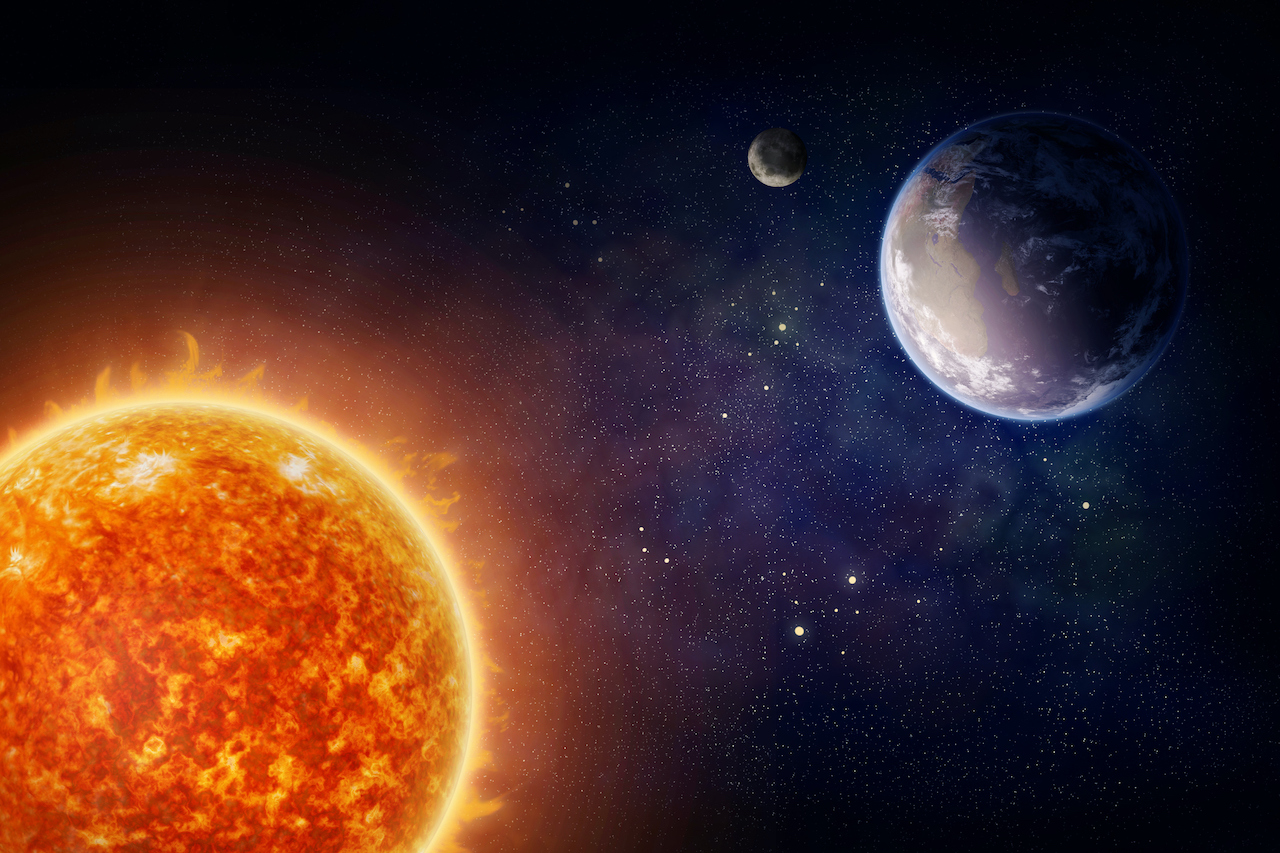
30 interesting facts about Sun
- 👁️ 260
The Sun is the star at the center of our solar system, and it is essential for life on Earth. It is a massive ball of hot, glowing gas that provides heat and light to our planet. The Sun has been the subject of scientific study for thousands of years and continues to captivate scientists and laypeople alike with its incredible size, power, and influence.
- The Sun is a type of star known as a G-type main-sequence star or G dwarf star.
- The Sun is approximately 4.6 billion years old.
- The Sun is located about 93 million miles (150 million km) away from Earth.
- The Sun is 109 times larger than Earth in diameter.
- The Sun’s surface temperature is about 5,500°C (9932°F).
- The Sun’s core temperature is estimated to be around 15 million °C (27 million °F).
- The Sun is made up of 71% hydrogen, 27% helium, and 2% other elements.
- The Sun is primarily powered by nuclear fusion, in which hydrogen nuclei combine to form helium.
- The Sun produces light and heat through this fusion process, and it releases a tremendous amount of energy in the form of light and heat.
- The Sun rotates on its axis once every 25-35 days.
- The Sun has a magnetic field that is responsible for sunspots, flares, and coronal mass ejections.
- The Sun’s magnetic field also generates the solar wind, a stream of charged particles that travels through the solar system.
- The Sun has 11-year cycles of activity, during which sunspots and solar flares increase in frequency.
- The Sun’s gravity is what holds the planets in our solar system in orbit.
- The Sun is responsible for the formation of the solar system, including the creation of planets, asteroids, and comets.
- The Sun is a main-sequence star, meaning it is currently in the phase of its life where it is fusing hydrogen into helium.
- The Sun will eventually run out of fuel and expand into a red giant, engulfing Mercury and Venus.
- After it expands into a red giant, the Sun will eventually collapse into a white dwarf.
- The Sun is a yellow dwarf star, but it appears white to the human eye because its light contains all colors of the spectrum.
- The Sun’s energy drives the Earth’s climate and weather patterns.
- The Sun is responsible for the day-night cycle on Earth and the changing seasons.
- The Sun’s gravity affects ocean tides and the migration patterns of many animals.
- The Sun has been worshipped and revered by many cultures throughout history.
- The study of the Sun is known as heliophysics.
- The first observations of sunspots were made by the Chinese over 2,000 years ago.
- The first telescope specifically designed for observing the Sun was built in 1609.
- The Sun’s corona can only be seen during a total solar eclipse.
- The study of the Sun has led to many important technological advancements, including solar panels and solar-powered satellites.
- The Sun is a main-sequence star, meaning it is fusing hydrogen into helium, but it will eventually run out of fuel.
- The Sun is one of the closest stars to Earth, making it a prime target for study.
The Sun is the star at the center of our solar system, and it is essential for life on Earth. It is a massive ball of hot, glowing gas that provides heat and light to our planet. The Sun has been the subject of scientific study for thousands of years…